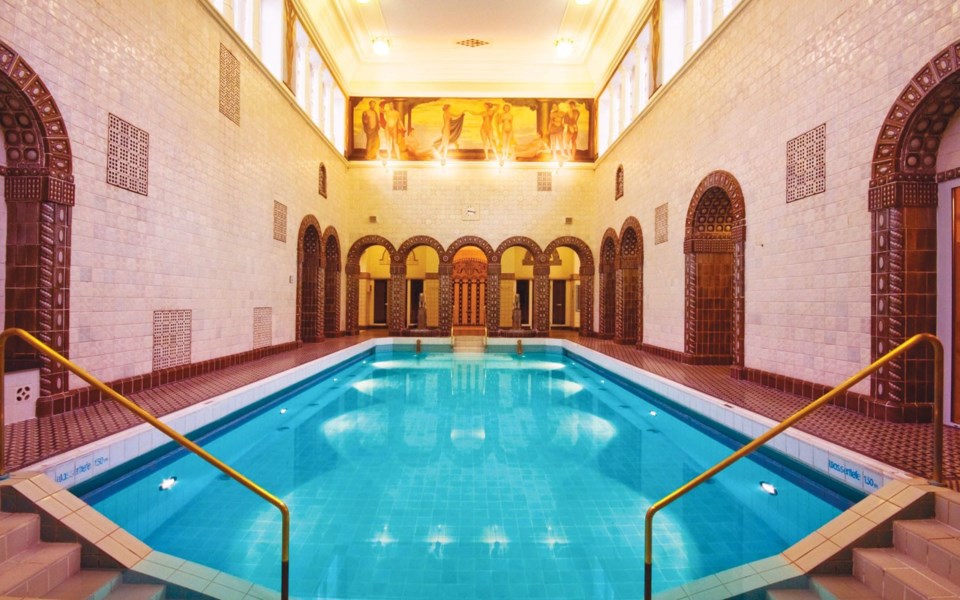
Certainly, you can make eye contact and even nod in greeting.
But, for heaven's sake, don't stare, in neither admiration nor aversion, at anyone's privates or bare backside.
Those are my do-and-don't tips for taking the waters naked at Kaiser Friedrich Therme, a Roman-style bath in the German spa-town of Wiesbaden.
Not that I'm a nude-in-public etiquette expert, but you tend to learn quickly when you and everyone around you is buck naked.
You can negotiate much of the elaborately pillared, tiled, muralled and vaulted circa 1913 bathhouse wrapped in a towel or wearing a robe.
But, if you're going to use the main pool, one of the saunas or steam rooms, hot tubs, plunge pools, ice or warm showers, you have to shed it all.
Thank goodness it wasn't overly busy when I visited Kaiser's therme at lunch time on a Monday.
Fellow bathers ran the gamut from Germans aged millennial through senior citizen to curious foreigners and young couples who seemed to be having a laugh they could be naked together in public.
I felt it was my tourist-and-historical duty to check out Kaiser's therme while in Wiesbaden, which is a 30-minute train ride west of Frankfurt.
After all, Wiesbaden was founded by the Romans as a spa town and it gained fame as such over the next 1,500 years.
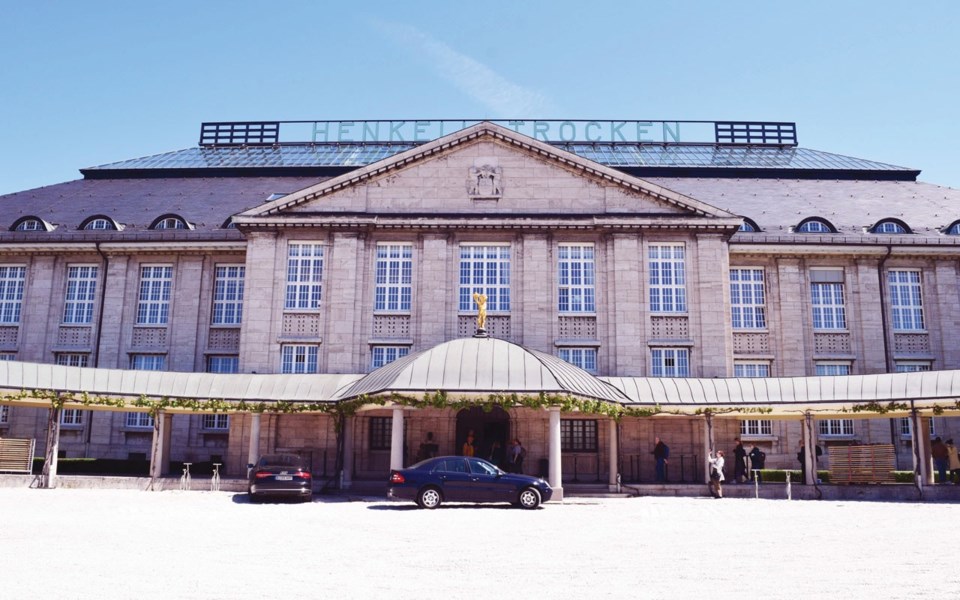
The Romans discovered exhausted horses recovered faster rolling around in fields soaked in thermal waters and injured soldiers healed miraculously after bathing in the naturally heated baths.
In fact, Wiesbaden loosely translated is fields of bath water.
Thanks to 26 underground thermal springs abundantly spouting this mineral-rich, 66-degree Celsius elixir, today there are fountains in public squares, drinking stations, two public thermal baths and numerous hotel spas utilizing the waters.
The other public bath is Thermalbad Aukammtal, which I find out later allows swimsuits.
In its spa-time heyday through the 17th, 18th and 19th centuries, Wiesbaden attracted the wealthy from around the world to soak up its cure-all waters.
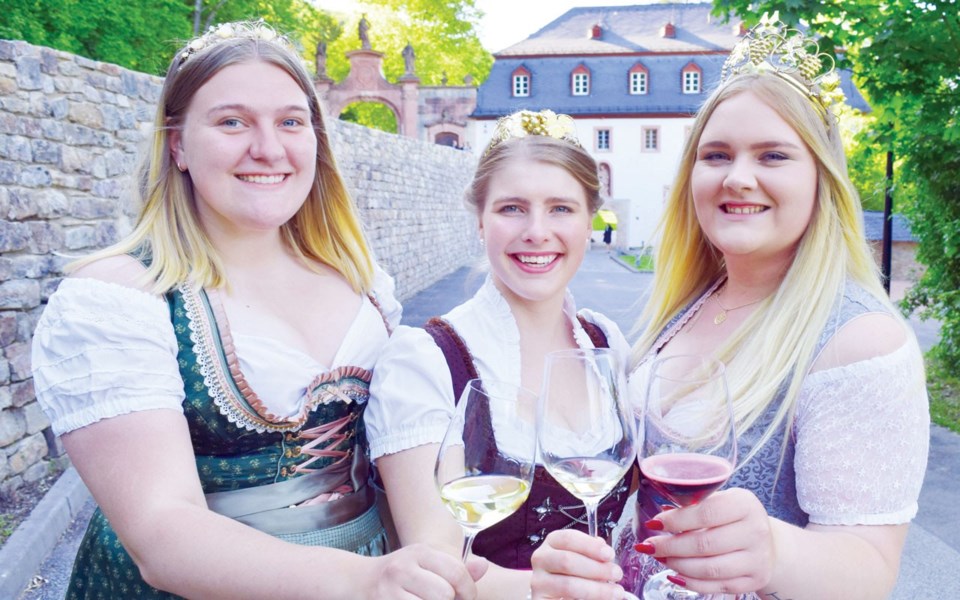
Today, the benefits are proven to be purely therapeutic.
Thus, after an hour at Kaiser therme, I feel relaxed and rejuvenated and my skin is baby-soft.
There's more to Wiesbaden than getting naked.
In fact, since 1856, the area has been home to sparking wine, a luxury drink that went hand-in-hand with well-heeled international spa goers.
That little sparkling wine maker is now Henkell and Wiesbaden has become the world capital of sparkling wine for the 90 million bottles of bubbly it pumps out annually.
While Henkell is essentially a massive factory, it has a neo-classical palace facade with grand, marble reception hall where I sipped Henkell Troken, the best-selling sparkling in the world, before touring its seven levels of underground production, bottling, labelling, storage and shipping facilities.
While Wiesbaden is called a spa town, it's really a cosmopolitan city of 300,000 that also happens to be steeped in history and heritage buildings.
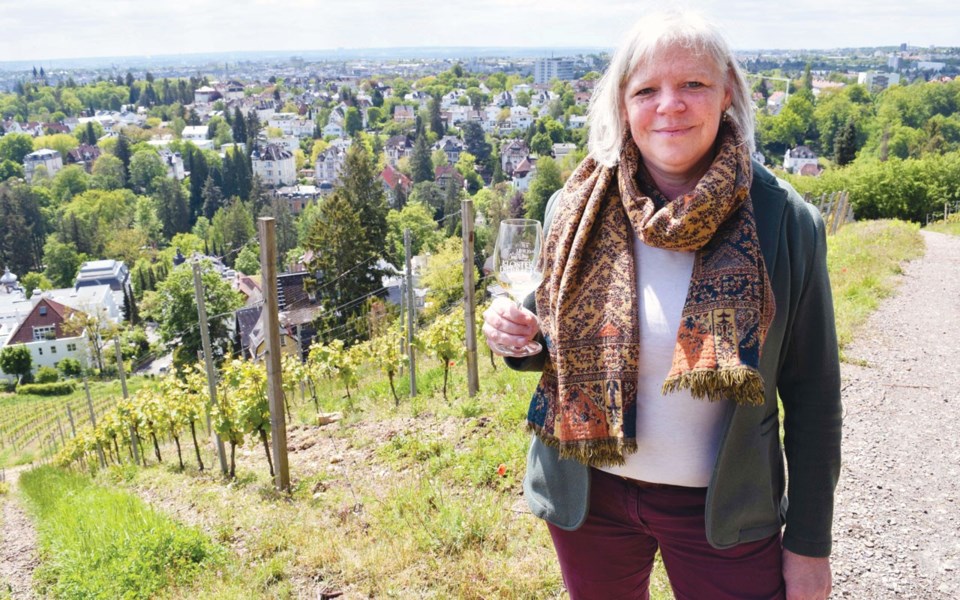
Wander the pedestrianized downtown, the cobblestoned district of shops and restaurants on higgledy-piggledy narrow lanes and wide boulevards.
Check out the stately City Palace built in 1842 for the Duke of Nassau and the Gothic Revival Market Church, which is built of 6.5 million bricks.
You'll be temped to drop into traditional restaurants like Uhrturm and Koyler for German favourites such as schnitzel paired with Riesling or lager.
Outside of downtown, you can visit the Riesling vineyard on Neroberg hill of Kloster Eberabach Winery and then go a little farther to the actual Kloster (historic monastery) where we meet the Rheingau wine queen, Katharina Bausch, and two of her princesses.
Speaking of royalty, outside of town you can also pop into Biebrich Palace, the summer home of the Duke of Nassau, which earned the nickname Versailles on the River Rhine for its grandeur.
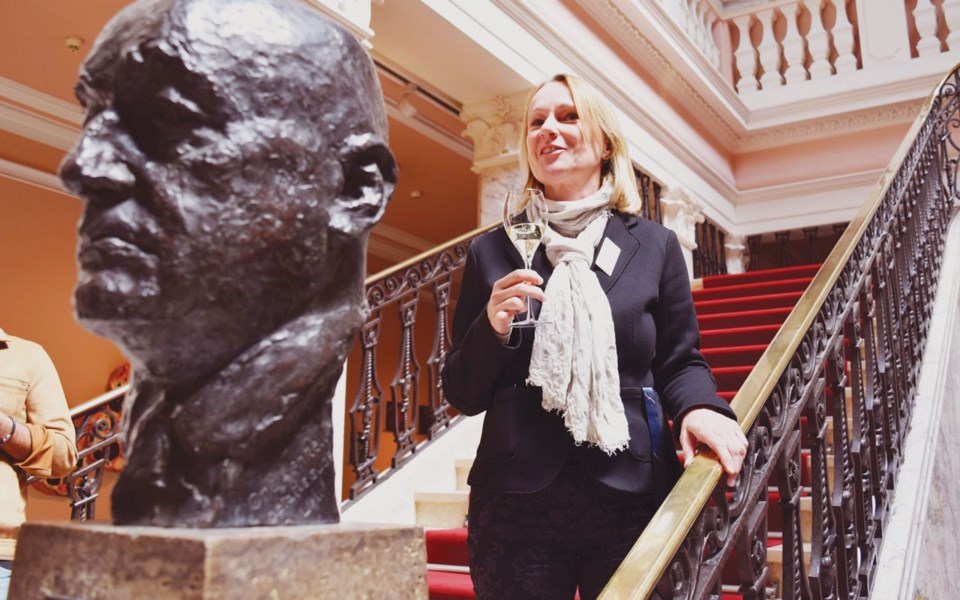
Check out Wiesbaden.de and www.Germany.Travel



